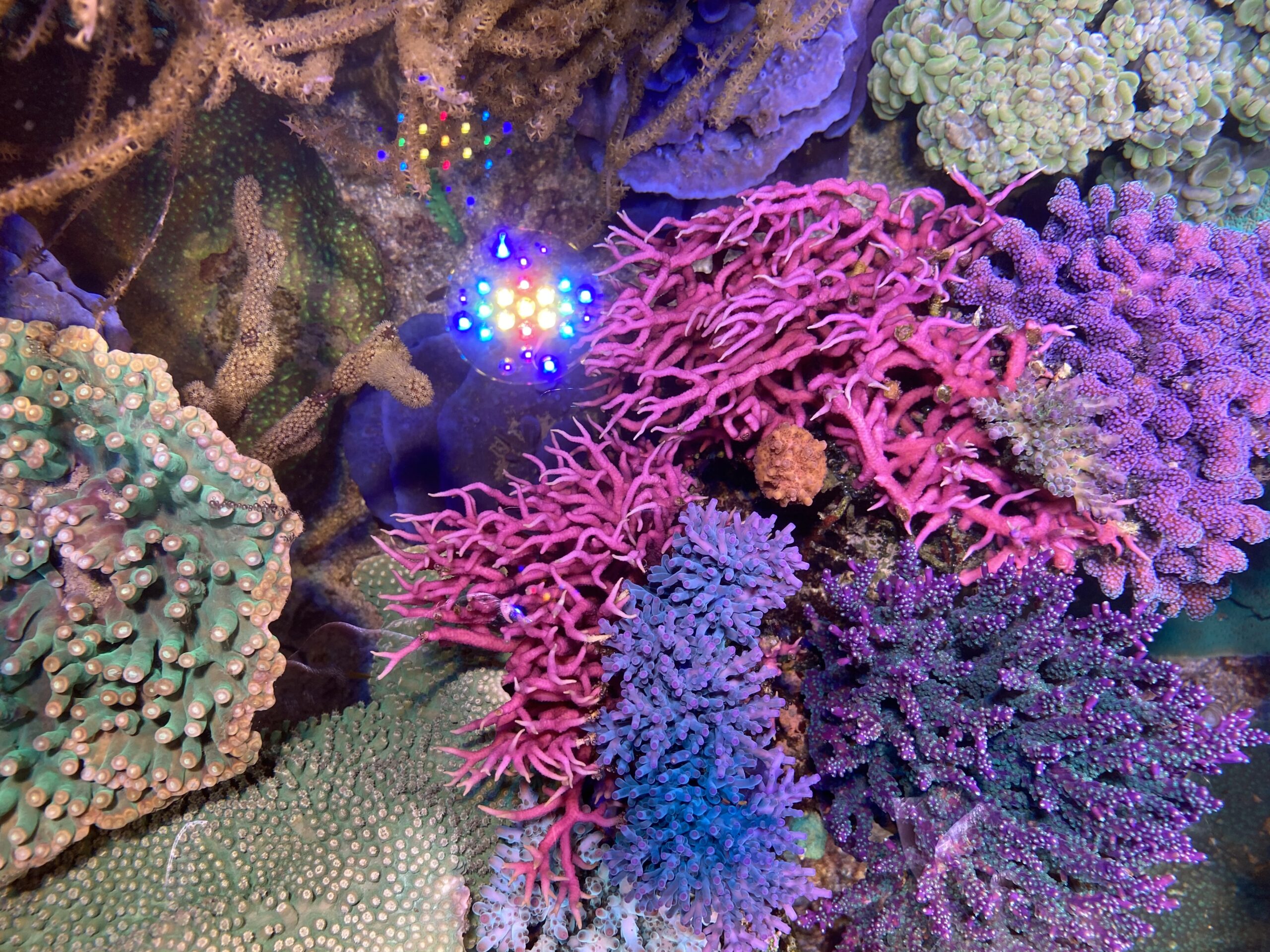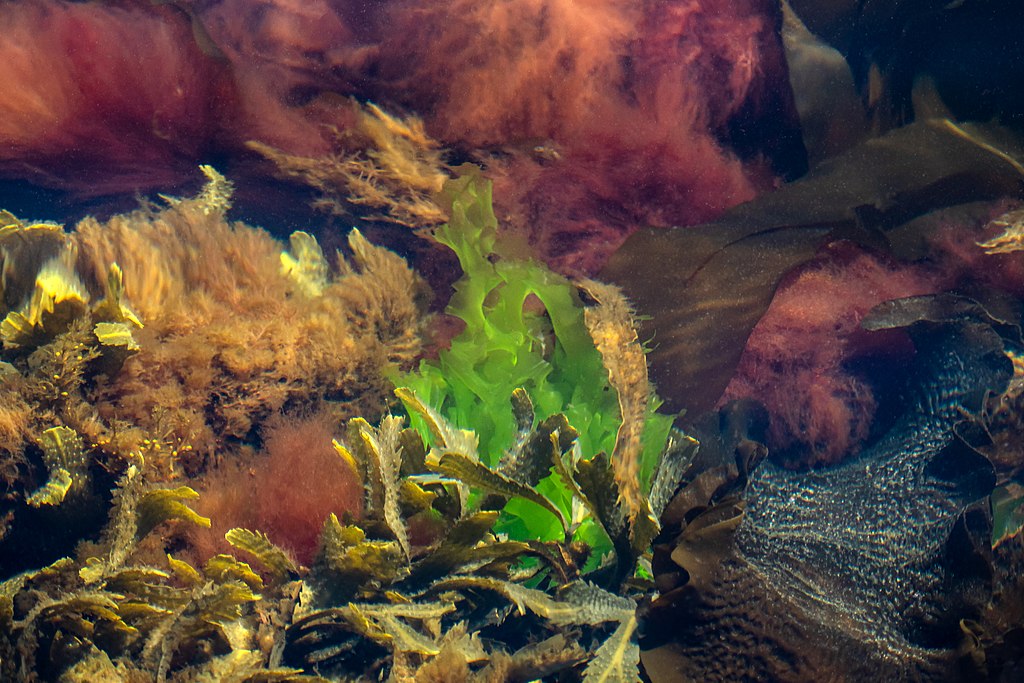Welcome to our Bubble Algae Removal Care Guide! Whether you’re a beginner or experienced hobbyist, we’ve got you covered. Here we’ll explain what the bubble algae is and its impact on your aquatic environment, while offering safe and efficient methods for removal. From manual removal techniques to natural and chemical remedies, we’ll explore various approaches that suit different preferences and tank setups.
Get ready to say goodbye to those unwanted bubbles and restore the beauty of your aquatic habitat. Let’s dive in and take control of the bubble algae situation together!
What is Bubble Algae?
Bubble Algae, or Valonia ventricosa is a pesky form of algae that can quickly overrun your reef or saltwater tank. Also called sea pearls or sailor’s eyeballs, Bubble Algae is a widespread species found in tropical and subtropical oceans that mostly sticks to live rock and mangrove roots. It can get into your tank undetected when you unintentionally add a contaminated rock or coral piece.
When you first notice Bubble Algae in your aquarium, you may find it interesting or even attractive. Its shining green “bubbles” are eye-catching and could initially seem harmless. However, in the right conditions, this algae will quickly spread from your live rock to your coral to any other accessible hard surface. When the bubbles become loose, they have the potential to clog your overflow tubes, intakes and substrate vacuum.
Author Note: In addition to ruining the aesthetics of your reef tank, they’ll also make it impossible for your prized corals to grow safely. You can’t solely rely on your tangs, sea urchins or blennies to take care of the issue. It’s best to immediately eradicate any signs of Bubble Algae before the problem spreads and disturbs your tank’s peaceful equilibrium.
Anatomy
Bubble Algae can have rounded or tubular green nodes that vary dramatically in size and color. While it’s easier to spot the quarter-sized variants, you should also watch for any pea-sized bubbles hiding in the gaps of your live rock. Depending on the species, your Bubble Algae may be elongated, pitted or slimy. They can grow in clusters but may also appear alone.
This algae utilizes an anchoring component called hold-fasts to keep it in place. The bubbles, also called bladders or vesicles, carry spores that will spread when the algae is popped.
Red vs Green Bubble Algae and Other Species
The most common form of Bubble Algae in hobbyists’ tanks is Valonia ventricosa. This particular species forms some of the largest green bubbles.
While green is the most frequently seen variant, you may also encounter red Bubble Algae also known as Red Grape Algae or by its scientific name as Botryocladia botryoides. This algae grows thanks to the nitrate and phosphate in the tank and in the event it pops or deflates, it will release spores that allow it to spread quite rapidly.
Other species to watch out for include:
- Dictyosphaeria ocellata. Experienced aquarists detest this light green algae because of its innate sliminess.
- Boergesenia. These bright green bubbles commonly grow on coral rubble in small scattered clusters and can be identified because they have longer bubbles.
- Dictyosphaeria cavernosa. Known as green bubble seaweed, this seaweed is recognizable by its pitted nature that becomes more noticeable the larger the bubbles grow.
Cut Open a Bubble Algae
There’s some debate on whether hobbyists should pop the Bubble Algae to remove it from the tank. Given how these algae bubbles are structured, bursting them can release more spores into your tank. Destroying or cutting open several Bubble Algae at a time even has the potential to lead to a full infestation.
However, the actual spore risk may depend on the size of the Bubble Algae vesicle. If it’s popped young, you likely won’t have to worry about future bubbles. It’s also important to note that any spores released into the tank will have to avoid your fish and filtration equipment and find a suitable spot for undisturbed growth.
Author Note: All in all, you shouldn’t encounter any significant issues when you scrape away young Bubble Algae. If you notice remnants left behind, scrub the live rock with a toothbrush or similar tool to remove any residue. When dealing with larger vesicles, try to keep them as intact as possible to limit any chances of regrowth.
Bubble Algae Eating Fish
Fortunately, there are several great invertebrate and vertebrate species that snack on this algae. Emerald crabs are one of the best lines of defense against this invasive bubble algae since they love eating it. However, a well-fed crab may be more interested in other, more tasty omnivorous options. Make sure to keep your tank clean and avoid overfeeding them so they continue to eat the algae.
Other species that can help with your Bubble Algae outbreak include:
Grazing herbivores are incredibly effective at taking care of your tank’s Bubble Algae population. Sea hares in particular will feed solely on this algae, which can put them at risk of starving once it has been fully removed.
Author Note: To stop any of your fish or invertebrates from dying and worsening your water quality, make sure to have a backup nutrient plan in place to keep your tank healthy.
Is it a Single or Multi-Cell Organism?
Bubble Algae is a unicellular or single-cell organism. This is one of the world’s largest single-celled species. Each bubble or vesicle is one cell and is full of floating nuclei in a cytoplasmic substance.
These bubbles house thousands of nuclei, or building blocks, that are ready to create more Bubble Algae. In the wild, the vesicles will reach a certain size and burst to continue their natural life cycle.
Removing Bubble Algae
Having a Bubble Algae problem won’t harm your fish, but it can slowly suffocate your corals. It will also eventually become unsightly and take over all the surfaces in your tank. Here’s how you can effectively remove this pesky algae before it ruins your beautiful aquascaping.
1. Manual Removal
If you discover your Bubble Algae early, you can easily remove it by hand or with a sharp screwdriver. To stop the organism from returning, you need to completely eliminate the vesicle including its anchoring hold-fasts. Gently grab the base of the bubble and twist it to pop it off. You can then use a siphon to suck up any loose remnants before they fall into the live rock below.
Author Note: Structures heavily coated in vesicles should be removed from the tank and scrubbed down. Clean them aggressively in a separate saltwater bucket. Unlike other algae species, Bubble Algae doesn’t require a lot of direct sunlight to grow. Thoroughly check under other rocks, structures and shaded spots for any other bubbles.
2. Denying Nutrients
You can also control your Bubble Algae population by limiting the nutrients they have access to. Other microalgae like Caulerpa and Chaetomorpha require similar nourishment and will help you starve out the Bubble Algae.
Another option is Coralline algae, which forms a crust over certain surfaces and stops vesicles from spreading. Adding these microalgae can make it harder for the Bubble Algae to thrive, but they can’t completely remove it from your tank.
3. Introduce New Fish
Marine fish like blennies can spend days picking away at your live rock and looking for tasty bits of algae. Most of the best algae eaters require a lot of tank space. They tend to become aggressive toward other tank mates that intrude on their perceived territory. Be sure to research all species you’re considering adding to ensure they’ll get along with your current fish.
Preventing Bubble Algae
You’re welcome to designate a specific corner of your tank to this fascinating algae. With routine maintenance and proper control, they can add a fun bit of color and originality. While some hobbyists keep these algae in their tanks, many others prefer to practice strict prevention procedures to avoid any outbreaks.
1. Quarantine New Arrivals
All new additions from your live rock to your coral plugs should be examined and quarantined until they’re deemed safe. These acquisitions are full of hidden cracks and spots where Bubble Algae spores can hide away. You want to give the vesicles time to grow so you can catch them before placing the fixture in the tank.
2. Helpful Housekeeping
Housekeeping options like investing in turbo snails can prevent any algae from gaining a permanent foothold. These snails will only help stop an outbreak. They have very small mouths and won’t be of significant assistance in clearing out an existing infestation. These snails can actually worsen your Bubble Algae problem if they bite holes in the vesicles.
3. Adjust Aquarium Conditions
Many experts believe that Bubble Algae requires excessive nitrates and phosphates. Try to keep your nitrates below 20 ppm and your phosphates below 0.03 ppm. You can manage these chemical levels by completing biweekly partial water changes and quality tests.
Author Note: It may also be helpful to utilize a protein skimmer or a separate, isolated refugium to boost your safe microalgae growth.

Wrapping Up
In conclusion, successfully removing bubble algae from your aquarium or pond is essential for maintaining a healthy and visually appealing aquatic environment.
Remember to regularly inspect your tank, maintain proper water parameters, and practice good fishkeeping habits to minimize the chances of bubble algae recurrence. Be patient and persistent in your removal efforts, as it may take some time to completely eradicate the algae.
We hope this guide has provided you with valuable insights and practical solutions for combating bubble algae. If you were able to remove it from your tank and want to learn more about caring for your corals, try these care guides.
By the way, don’t forget to tag us on Facebook when sharing some before and after bubble algae photos of your tank. Thanks for stopping by!



